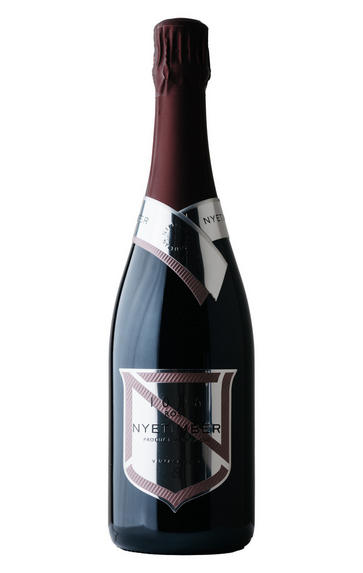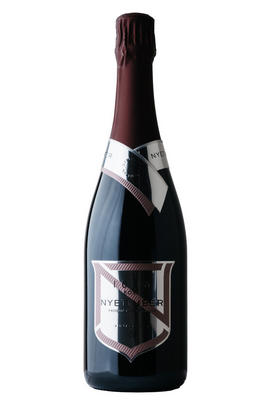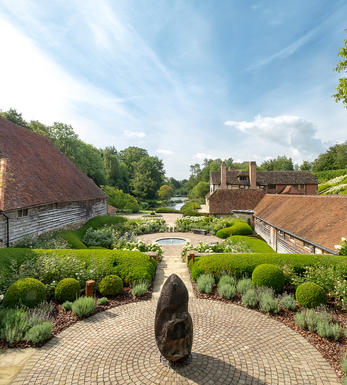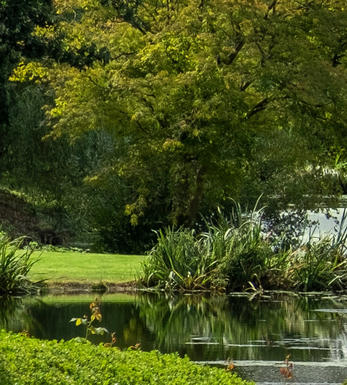
2013 Nyetimber, 1086, Rosé, Prestige Cuvée, Sussex, England

Critics reviews
The 2013 Nyetimber Rosé 1086 was bottled in May 2014 and disgorged in March 2020. It's paler in colour than the 2010. The nose still feels a little undeveloped and clearly just needs more time in bottle. The palate is promising, quite elegant and poised, with a fresh line of acidity, touches of strawberry and a light, saline finish.
Drink 2021 - 2028
Neal Martin, Vinous.com (September 2021)
The second release of Nyetimber's top rosé. 64% Pinot Noir, 36% Chardonnay grown on greensand and chalk. Bottled 13 May 2014. Riddling date 9 January 2020. Disgorged 12 March 2020. Made from only five base wines and with a red portion of 14%. Base wines are fermented in stainless steel, with old oak barrels used to age the blend's red portion. From bottling to disgorging, this top cuvée spent just under six years ageing on lees and, so far, has had three and half years post disgorgement. TA 8 g/l, pH 3.2, RS 8 g/l.
Pale orangey gold – more golden than pink – with lots of small bubbles. Intense aroma that reminds me of peaches and clementine though they are slightly hidden by the richness of the yeasty but subtle autolytic character. In the mouth, this is quite powerful, very slightly tannic in its grip but just right to complement the vibrant freshness and the mature complexity of red fruits and the first signs of sweet brioche. Like brioche filled with wild strawberries but it's an impression and only a subtle one with a long creamy aftertaste. Intensely satisfying and mouth-watering at the same time.
Drink 2023 - 2030
Julia Harding MW, JancisRobinson.com (December 2023)
About this WINE

Nyetimber Vineyard
For over twenty five years Nyetimber has had a single aim: to make the finest English sparkling wine, one to rival the very best in the world, including champagne.
A true pioneer, Nyetimber was the first producer of English sparkling wine to exclusively grow the three celebrated grape varieties: Pinot Noir, Pinot Meunier and Chardonnay. Each bottle of Nyetimber is made from one hundred percent estate-grown grapes.
1988, Nyetimber planted its first vines. In 1997 in a blind tasting Nyetimber's 1992 Blanc de Blancs caused a debate as to which area of France it came from. Nyetimber wines have since won rave-reviews and International medals and, have also won the admiration of members of the Royal Family and various Heads of State. Owner and Chief Executive Eric Heerema and winemaker Cherie Spriggs are committed to producing wines of exceptional quality.
Nyetimber Manor is mentioned in the Domesday Book and was once home to Anne of Cleves, fourth wife of Henry VIII. 1,000 years later it is producing one of the finest sparkling wines in the world.

Sussex
Located in southern England, Sussex has emerged as a promising region for wine production in recent years.
The country's cool climate and chalky soil, reminiscent of the renowned Champagne region in France, have created favourable conditions for vineyards to flourish.
Winemaking in Sussex focuses on sparkling wines made from traditional methods using classic grape varieties such as Chardonnay, Pinot Noir, and Pinot Meunier.

Champagne blend
Which grapes are included in the blend, and their proportion, is one of the key factors determining the style of most Champagnes. Three grapes are used - Pinot Noir, Chardonnay and Pinot Meunier.
26% of vineyards in Champagne are planted with Chardonnay and it performs best on the Côtes des Blancs and on the chalk slopes south of Epernay. It is relatively simple to grow, although it buds early and thus is susceptible to spring frosts. It produces lighter, fresher wines than those from Burgundy and gives finesse, fruit and elegance to the final blend. It is the sole grape in Blancs de Blancs, which are some of the richest long-lived Champagnes produced.
Pinot Noir accounts for nearly 40% of the plantings in Champagne and lies at the heart of most blends - it gives Champagne its body, structure, strength and grip. It is planted across Champagne and particularly so in the southern Aube district.
The final component is Pinot Meunier and this constitutes nearly 35% of the plantings. Its durability and resistance to spring frosts make the Marne Valley, a notorious frost pocket, its natural home. It ripens well in poor years and produces a soft, fruity style of wine that is ideal for blending with the more assertive flavours of Pinot Noir. Producers allege that Pinot Meunier lacks ageing potential, but this does not deter Krug from including around 15% of it in their final blends.


Buying options
Add to wishlist
Description
This is Nyetimber’s prestige cuvée rosé, produced from a selection of the estate’s best vineyard parcels in West Sussex and only in the best vintages. The wine has a pronounced red-fruit nose of wild strawberry and cherry. Notes of red apple join in on the palate, all underpinned by beautiful crystalline acidity. The high proportion of Pinot Noir gives weight. Pair it with richer dishes with lots of substance; I can recommend it with chicken with morels. This is a very serious English sparkling wine to enjoy now or cellar for another decade or more.
Drink 2023 - 2035
Martyn Rolph, Head of Buying, Berry Bros. & Rudd
wine at a glance
Delivery and quality guarantee